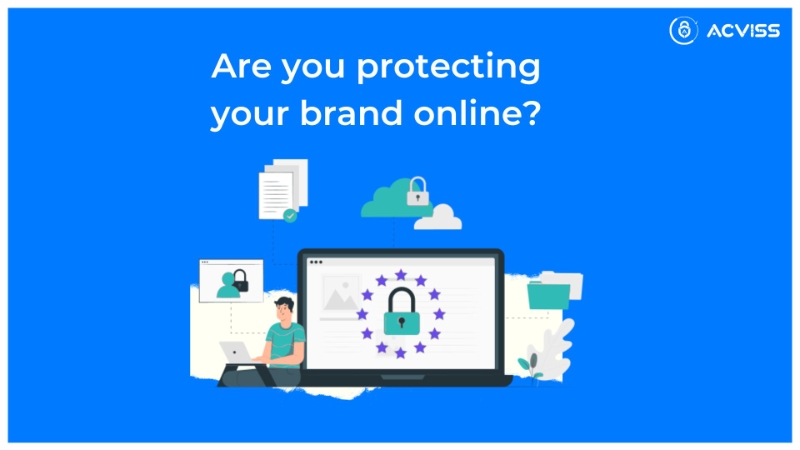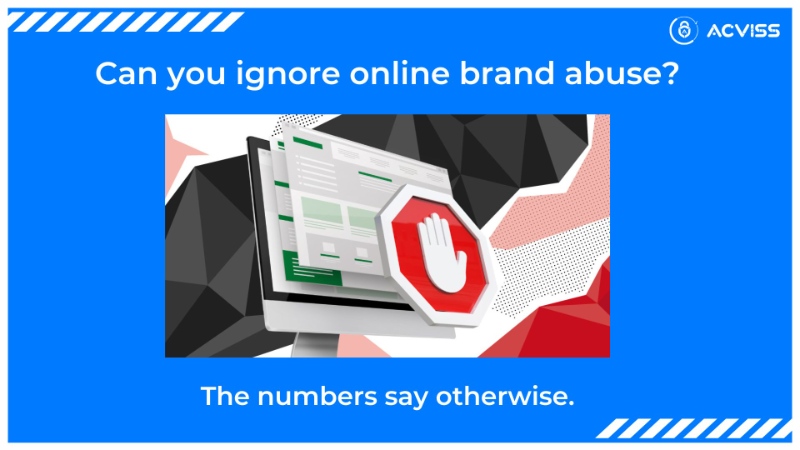
We have some good news as well as bad news. The bad news is that only updating your firewall is not enough to protect your brand online. Do you know about end-to-end data encryption? But data encryption alone is also not enough for online brand protection. While many businesses understand that online brand protection needs a holistic strategy, they still become victims of brand abuse. Mostly, the reason is that brands still treat online brand protection as a one-time exercise.
It is hard to keep pace with the changes happening in the internet world. New websites, social media, OTT, and marketplace platforms emerge daily. As the fad keeps changing and evolving, so does the digital marketing strategy. But what about an online brand protection strategy? Can brands afford to go with the brand protection strategy that once worked for them in a dynamic world? As the Internet gets innovative and creative, so do online fraud techniques. From domain spoofing to phishing and ransomware attacks, brands need protection online. Brand abuse is not an exaggeration. As parents worry about their kids getting entangled with the Dark Web, brands must worry about their products and online presence.
Can you ignore online brand abuse? The numbers say otherwise.

Reported to grow at 15% yearly, cybercrimes can cost the world 10 trillion USD by 2025.
Over 63% of businesses were victims of social media-engineered attacks and phishing frauds in 2019. The number increases every year
Small businesses are easy victims of data breaches. In 2018, nearly 43% of data breach-related cases targeted small businesses.
Despite the increase in threat, the time required to identify a cybercrime attack takes time. For example, businesses take an average of 200 days to detect online fraud and attacks.
What is the cost, and who pays the price?
Building a brand reputation is effortful and time-consuming. But isn’t it worth it? After all, customers pledge their loyalty to reputed brands. With counterfeit products on the rise, brand image is the saving grace in a competitive market. Along with building trust, brands try to create a recall value through their marketing efforts. In the digital era, a vibrant website and an engaging social media page can result in big payouts. If you have spent money, time, and staffing building your brand, can you let online fraud strip away your efforts? If you don’t strategize to protect your brand, who will? But there is a more pertinent question for consideration.
Will customers trust a brand that does not proactively fight for its value and image?
When customers lose their privacy due to a data breach, a business loses trust and reputation. Would you buy a product from a lesser-known website? Even if everything looks good, customers do not trust unknown websites with their financial information. It comes as no surprise because most cybercrimes involve financial fraud.
Digital presence and perception: Online attacks can dampen the revenue stream of reputed brands. But there are many intangible damages that brands suffer due to online abuse. For example, fake and lookalike websites and social media pages can use your brand name to endorse illegal and immoral activities and products.
The aftermath can be bloody: Ask a brand that has recently been a victim of online fraud. The consensus would be that repairing damage is an expensive and time-consuming affair. Only a few fraud cases can completely ruin the brand’s image.
Have you heard of phishing attacks and scams? Business Email Compromise is similar to phishing. In a phishing attack, fraudsters impersonate the brand. Domain phishing, fake social media pages, and websites are a few ways of brand impersonation. Upon imitating, fraudsters send spurious links via SMS or emails to unsuspecting customers. Have you been warned not to click on unknown links? But what if these links come from seemingly known sources? Fraudsters bet on the lack of digital literacy and time to dupe users. Like phishing attacks, Business Email Compromise also abuses the brand’s reputation. But in these attacks, fraudsters hack and breach the business security systems. BEC scams impact all the stakeholders. Not only do BEC scams damage the company’s reputation, but they can also lead to revenue loss. Through fraudulent emails, scammers can redirect money to fake accounts. What is worse is that brands take time to understand that they are victims of a scam.
Social media and online marketplace sites have complicated the issue of brand abuse. Anyone can create a lookalike business page on social media. The sites barely have the means to authenticate the page. Many influencers promote products solely for profit, often without using them. This leaves the audience vulnerable to counterfeiters and scammers. Additionally, scammers can use the comments section of legitimate business pages to send bulk links and fake product listings. While online marketplace sites are now making efforts to curb fake listings, the cases of counterfeit products being sold online are on the rise. In addition to selling fakes, social media is a library of personal data. Data breaches through social media can provide fraudsters with specific information that helps targeted marketing.
Also Read : Rise of Fake Social Media Influencers and Its Impact on Brands
Online fakes cut down your profits and bleed out your revenue. Online marketplaces and digital marketing have opened new avenues for brands. But is your brand safe online? Social media is now a social commerce shopping platform. But are brands most vulnerable on social media platforms? Has the digital boom given a cloak of invisibility to online brand abuse? Lookalike domains and bogus websites tarnish your brand image and reputation. Duplicate pages and fake profiles of your brands may steer away loyal customers. Moreover, the Internet is a vast space. How can brands track listings and profiles across all online platforms?
Online Brand Protection Solution: TRUVISS by ACVISS
Online brand protection without an automated tool can be confusing and time-consuming. With Truviss, we wanted to take a holistic approach to counterfeiting in online marketplaces. Truviss is an amalgamation of all the anti-counterfeit tools you will find online. It is fully automated. Truviss uses AI and Machine Learning to detect fraud on a real-time basis. You can protect your brand across the Internet using a single tool with automatic alerts.
Truviss works across all online marketplaces.
Truviss assists brand management across applications, social media, e-commerce, and websites or domains. It can track your brand even on the dark web.
You can detect fake sellers, scams, impersonation, and duplication in real time. Truviss investigates before it is too late.
Brands, as well as customers, can use Truviss.
As brands scale their business, they cannot spend too much time detecting fakes on marketplaces. Truviss is intelligent, impactful, and cost-effective.
If you're looking for more tips on protection from counterfeits click here



